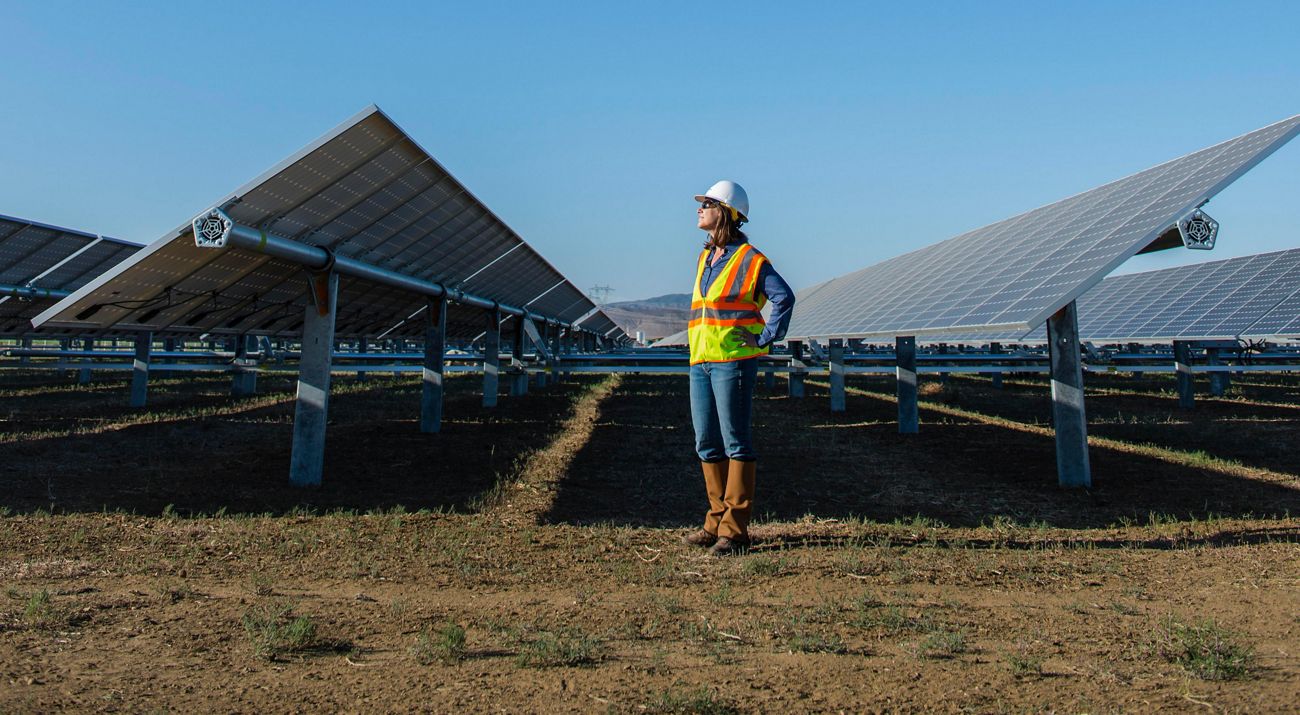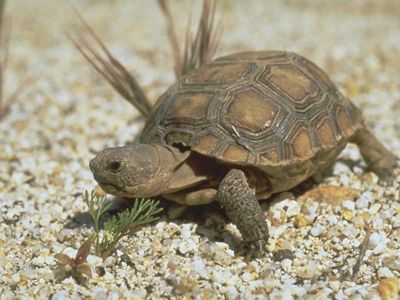
The Mojave Desert is truly one of the world's "Last Great Places." Its scenic beauty and natural wonders shelter a huge range of plants and animals, and its 20 million acres provide for people in a multitude of ways—clean water to drink, fresh air to breathe, energy to power our lives and economic opportunities from recreation to military training.
Quote: John Zablocki
Finding ways to provide for both wildlife and energy needs is key. The stakes are high, and we have to get things right from the start.
A Sustainable Future
Nevada may be the Silver State, but there’s lots of gold, too—and not just the mineral. The sun’s golden rays are an increasingly sought-after commodity in the desert.
That's why the Mojave Desert is one of the most promising areas in the world for developing solar energy.
That economic opportunity is important to Nevada's future, but if not done carefully, utility-scale developments can have very serious environmental consequences. They can fragment habitats for threatened species like desert tortoise and pose threats to birds and other wildlife—even fish.
But there is hope. Problems can be avoided by building these developments in the right places. That's what we're helping accomplish.
The Nature Conservancy's goal is to encourage the development of clean energy while protecting the desert’s unique landscapes and ecology. We hope to facilitate development in the smartest way possible by working with companies, government agencies and local communities to use our science to help inform decisions about where development makes sense. One of the best examples of how we're doing this is our Mining the Sun initiative, which is working to advance development and storage of renewable energy on old mine sites and other brownfields (previously developed areas).

Solar Energy in the Mojave
Just how big are solar arrays? A single utility-scale facility can be as large as downtown San Francisco, with the vegetation that wildlife depend on entirely removed. Because the Mojave is so arid, restoring its habitats is difficult, if not impossible in most cases.
The pace of change these developments bring is quick, but many of the desert’s inhabitants—like tortoises—are not. Once habitat those plants and animals need is lost and migration corridors severed, there may be no way to recover their populations with the current conservation methods available.
“Finding ways to provide for both wildlife and energy needs is key. The stakes are high, and we have to get things right from the start,” says John Zablocki, the Conservancy’s Mojave Desert program director. “We're trying to help strike that balance by working with land managers to make science-based decisions about the best places to locate solar energy developments on the millions of acres of public land in the Mojave.”
Put simply, we want the development to go in areas that are already degraded where it will have minimal environmental impact, and not in the middle of intact desert habitat. Learn more about our Mining the Sun initiative that's working to do just that.
Mining the Sun
Through its Mining the Sun Initiative, The Nature Conservancy is focused on making it easier to put renewable energy facilities on already developed sites across Nevada, rather than on healthy, undeveloped lands that are important for clean water, open space and wildlife. In Nevada, closed mining lands offer the biggest opportunity for this use, but other sites like landfills also provide options.
According to a Rocky Mountain Institute analysis of EPA data, there are more than a million acres of brownfield sites in Nevada. Those areas alone could provide the needed capacity to reach a 50% Renewable Portfolio Standard (RPS) for Nevada several times over. In fact, by one initial estimate, development on brownfields could fulfill more than 2,000% of the needed megawatts to meet a 50% RPS in Nevada. We're working with partners and leaders to prioritize those types of developments.
Development by Design
The Nature Conservancy is applying our Development by Design approach to caring for the Mojave desert. This process aims to balance conservation needs with economic needs.
Development by Design brings together everyone who depends on the region’s resources in order to ensure a permanent and amicable solution to the desert’s environmental and energy needs. By using the Conservancy’s extensive scientific knowledge of the region, we can guide the development process and inform mitigation strategies to make the Mojave a healthier place.
Dry Lake Solar Energy Zone
One example of our strategy in action is at the Dry Lake Solar Energy Zone. We worked with the Bureau of Land Management (BLM) on a pilot project to focus development in an already-degraded land area. Then we helped develop a mitigation plan for whatever residual impacts would still occur from development there. This year, as a result of these efforts, the BLM has successfully leased the area to solar developers. Read a New York Times op ed by Nels Johnson, the Conservancy's Director of North America Energy, about the Dry Lake Solar Energy Zone.
"It’s a win-win for everybody,” says Zablocki. “In this case, the developers get improved certainty over permitting, society gets renewable energy, and we keep the Mojave healthy and beautiful in the process.”
But we shouldn’t start counting our tortoises before they hatch. The real challenge is to institutionalize the effective landscape-scale planning that the Dry Lake Solar Energy Zone demonstrated.
While the scale of future development in the Mojave is immense, the Conservancy is committed to making sure that this landscape becomes a model for sound development by design. “We have our work cut out for us, but we’ll be there every step of the way,” says Zablocki. “From my vantage point, the future looks bright. If we get it right down here, I’m confident the tortoise can still beat the hare.”